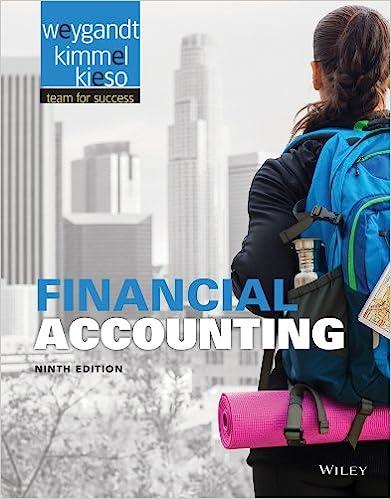Question
ABC Company started business on January 1, 2016. The following transactions occurred in 2016: 1. On January 1, the company issued 10,000 common shares for
ABC Company started business on January 1, 2016. The following transactions occurred in 2016:
1. On January 1, the company issued 10,000 common shares for $250,000.
2. On January 2, the company borrowed $50,000 from the bank.
3. On January 3, the company purchased land and a buliding for a total of $200,000 cash. The land was recently appraised at a fair market value of $60,000. (Note: Because the building will be depreciated in the future and the land will not, these two assets should be recorded in separate accounts.)
4. Inventory costing $130,000 was purchased on account.
5. Sales to customers totalled $205,000. Of these, $175,000 were sales on account.
6. The cost of inventory that was sold to customers in transaction 5 was $120,000.
7. Payments to suppliers on account totalled $115,000.
8. Collections from customers on account totalled $155,000.
9. Payments to employees for wages were $55,000. In addition, there was $2,000 of unpaid wages at year end.
10. The interest on the bank loan was recognized and paid for the year. The interest rate on the loan was 6%.
11. The building was estimated to have a useful life of 30 years and a residual value of $20,000. The company uses the straight-line method of depreciation.
12. The company declared dividends of $7,000 on December 15, 2016, to be paid on January 15, 2017.
Question:
Analyze the effects of each of the transactions on the basic accounting equation using a table like:

Step by Step Solution
There are 3 Steps involved in it
Step: 1

Get Instant Access to Expert-Tailored Solutions
See step-by-step solutions with expert insights and AI powered tools for academic success
Step: 2

Step: 3

Ace Your Homework with AI
Get the answers you need in no time with our AI-driven, step-by-step assistance
Get Started


